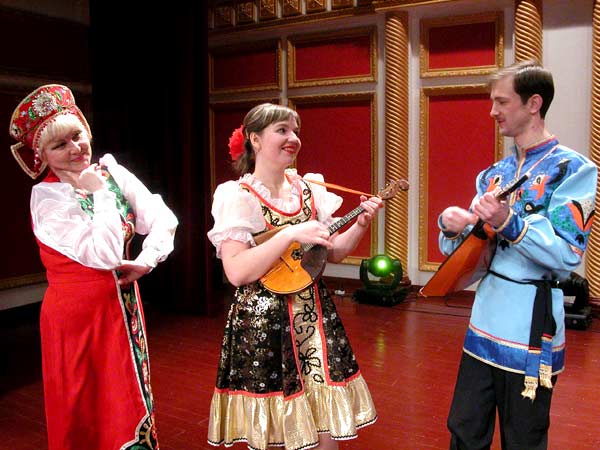Year-round charm
 |
|
Russian artists perform at a theater in Harbin. [Photo by Bai Linhe / for China Daily] |
These parks vary in the environments and resources they provide, ranging from the newly completed Huanghe Park, a relatively commercial hot spot for those looking to relax, to Taiyangdao Park, or Sun Island, one of several scenic wetlands spread across the city's 10 districts.
Sun Island, on the northern bank of the Songhua River, for example, covers almost 4,000 hectares and is home to more than 300 species of animal, as well as 60 varieties of fish. Here, visitors can see (and feed) wild deer, swans and squirrels, explore the karst cave, and take a tour of Flower Garden, which is divided according to the signs of the zodiac.
Separated into three parts, the island's western reserve is famous as the venue for the annual Ice Sculpture Festival in winter, while the east is undergoing extensive but delicate urban development (a small marina has been built to cater to the growing number of yacht owners).
Meanwhile, in an attempt to protect the island's biodiversity, swathes of land - including a once-popular beach - have been closed to the public and made into conservation areas.
Harbin, one of the most populated provincial capitals in China, has also instigated revamps of several run-down, inner-city communities and shopping districts, most of which were chosen due to their historical importance.
Since 2007, the city has invested more than 1 billion yuan in projects aimed at "destroying all shantytowns and rundown areas", says Zhang, adding: "The goal is to restore the function of the downtown."
One such project from the 35 or so that have been launched is the so-called Chinese Baroque Block, a formerly bustling marketplace in central Nangang district.














